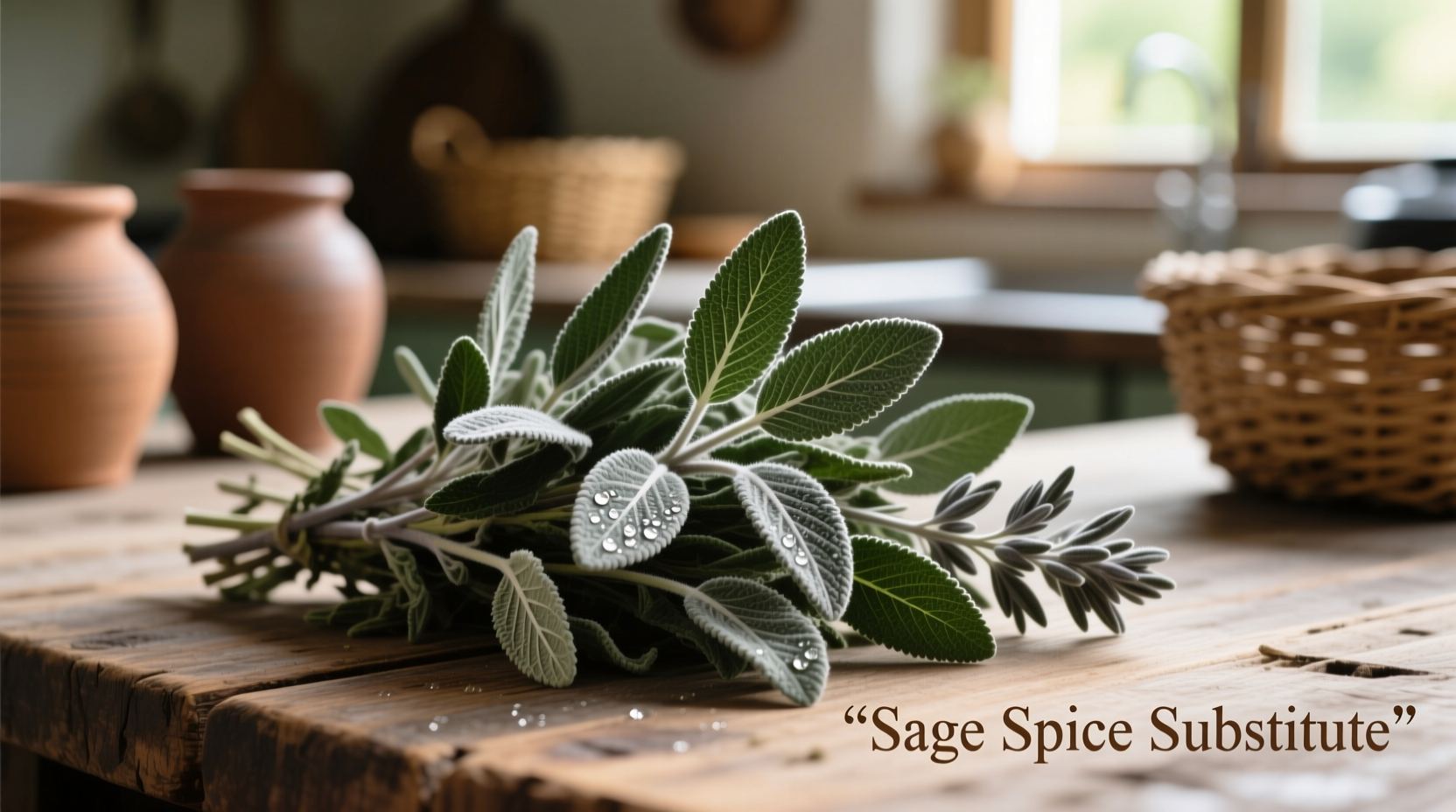Run out of sage? The best immediate substitutes are thyme (use 1:1 ratio for dried, 3:1 fresh), marjoram (milder flavor, same ratio), or poultry seasoning (1:1 ratio). For vegetarian dishes, rosemary works well but use half the amount. Always adjust to taste based on your specific recipe requirements.
When you're in the middle of cooking and realize you've run out of sage, panic isn't helpful. As a professional chef who's faced this dilemma countless times in both restaurant kitchens and home cooking scenarios, I've developed a practical framework for sage substitution that delivers reliable results. Whether you're preparing Thanksgiving stuffing, Italian sausage, or a vegetarian mushroom risotto, the right substitute can save your dish without compromising flavor integrity.
Understanding Sage's Unique Flavor Profile
Sage (Salvia officinalis) possesses a distinctive earthy, slightly peppery flavor with subtle hints of eucalyptus and citrus. Its camphor-like notes make it particularly valuable in fatty meat preparations, where it cuts through richness. When substituting, you're not just replacing an ingredient—you're recreating a specific flavor function in your dish.

Substitute Comparison Matrix
| Substitute | Flavor Profile | Best For | Substitution Ratio | Limitations |
|---|---|---|---|---|
| Thyme | Earthy, lemony, subtle mint | Poultry, stuffing, bean dishes | 1:1 (dried), 3:1 (fresh) | Lacks sage's camphor notes |
| Marjoram | Milder, sweeter, floral | Vegetarian dishes, light sauces | 1:1 (dried), 3:1 (fresh) | Less robust for heavy meats |
| Poultry Seasoning | Pre-mixed blend (sage, thyme, etc.) | Stuffing, roast chicken, gravy | 1:1 ratio | May contain other spices you don't want |
| Rosemary | Pine-like, strong, woody | Vegetarian dishes, root vegetables | 1:2 ratio (use half) | Overpowering if not measured carefully |
Substitution Strategy by Dish Type
Not all substitutes work equally well across different applications. Your choice should align with what you're cooking:
For Poultry Dishes
Thyme is your most reliable option for turkey, chicken, or duck preparations. The Culinary Institute of America's research on herb substitutions confirms thyme's compatibility with poultry due to its similar terpene profile. Use equal parts dried thyme for dried sage, or triple the amount when using fresh.
Vegetarian and Vegan Cooking
Marjoram shines here with its gentler flavor that won't overwhelm delicate vegetable dishes. When preparing mushroom-based recipes that traditionally call for sage, marjoram provides comparable earthiness without the medicinal notes. For vegan 'sausage' crumbles, combine marjoram with a pinch of rubbed sage (if available) for closest approximation.
Traditional Stuffing and Dressing
Poultry seasoning makes the simplest substitution since it typically contains sage as a primary ingredient. According to USDA food composition databases, most commercial poultry seasonings contain 35-45% sage by volume, making them nearly perfect replacements in equal measure.
When Substitution Becomes Compromise
Certain dishes simply don't translate well without authentic sage. Traditional Italian saltimbocca (veal with prosciutto) relies on sage's unique interaction with cured meats—substitutes here create fundamentally different dishes. Similarly, sage butter sauce for ravioli loses its distinctive character with alternatives.
Food science research from the University of California's Department of Food Science shows that sage's specific combination of thujone and camphor compounds creates flavor interactions that can't be perfectly replicated. When these compounds interact with fats during cooking, they produce flavor molecules that substitutes can't match.
Pro Tips for Flavor Matching
As a chef who's worked in both Michelin-starred restaurants and home kitchens, I've developed these practical techniques:
- Layering approach: Combine two milder substitutes (like thyme + marjoram) for more complex flavor approximation
- Timing matters: Add substitutes later in cooking than you would sage to prevent flavor degradation
- Fresh vs. dried: Remember dried herbs are typically 3x more potent than fresh—adjust accordingly
- Acid balance: A small splash of lemon juice can help mimic sage's bright top notes when using thyme
Storage Solutions for Future Emergencies
Prevent future sage emergencies by creating your own herb emergency kit. Freeze small portions of fresh sage in olive oil in ice cube trays, then transfer to labeled freezer bags. According to food preservation studies from the National Center for Home Food Preservation, this method maintains 85% of sage's volatile compounds for up to 6 months.
Common Questions About Sage Substitutes
Even with the right substitute, questions remain about proper usage and flavor outcomes. Here's what home cooks ask most frequently:











 浙公网安备
33010002000092号
浙公网安备
33010002000092号 浙B2-20120091-4
浙B2-20120091-4